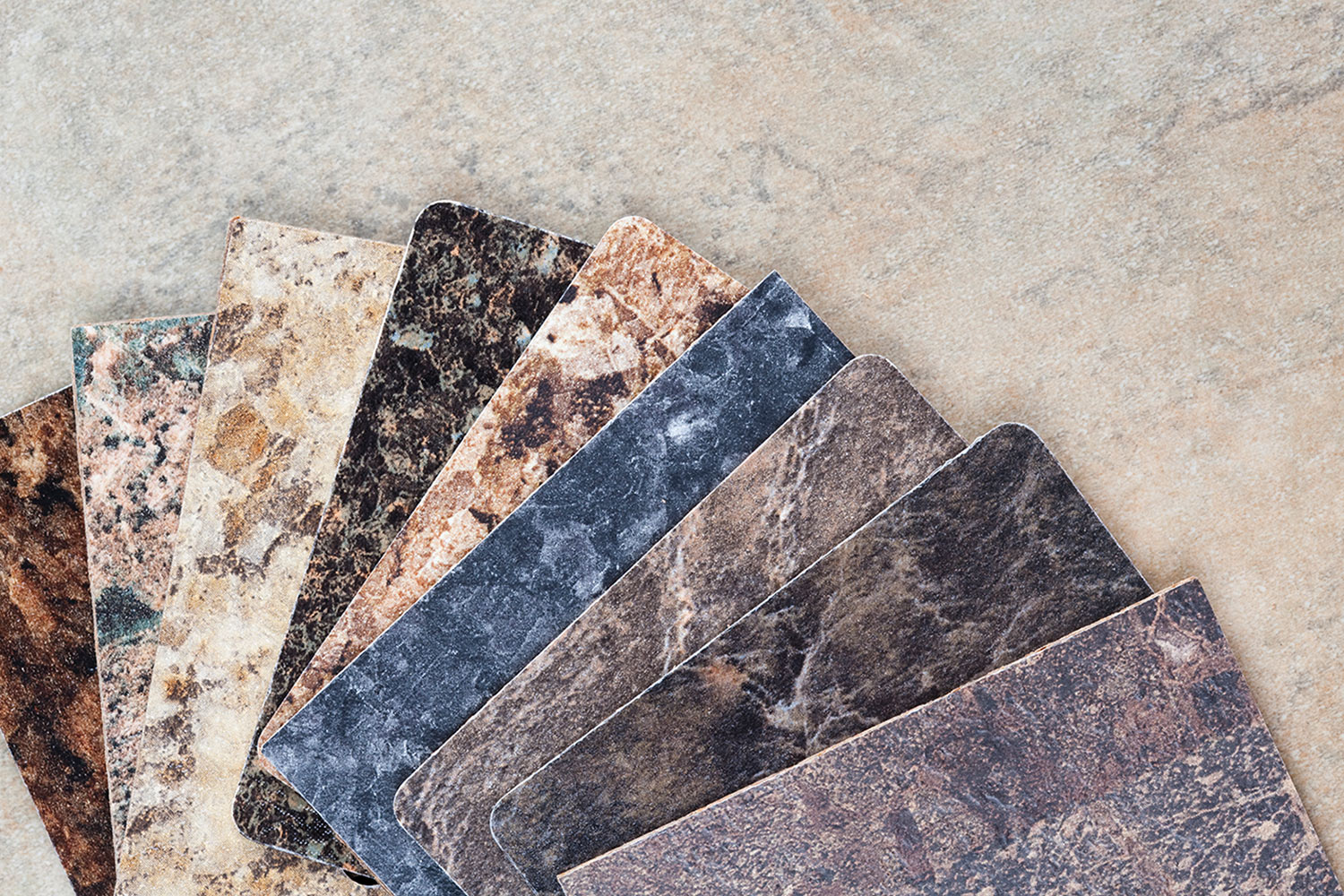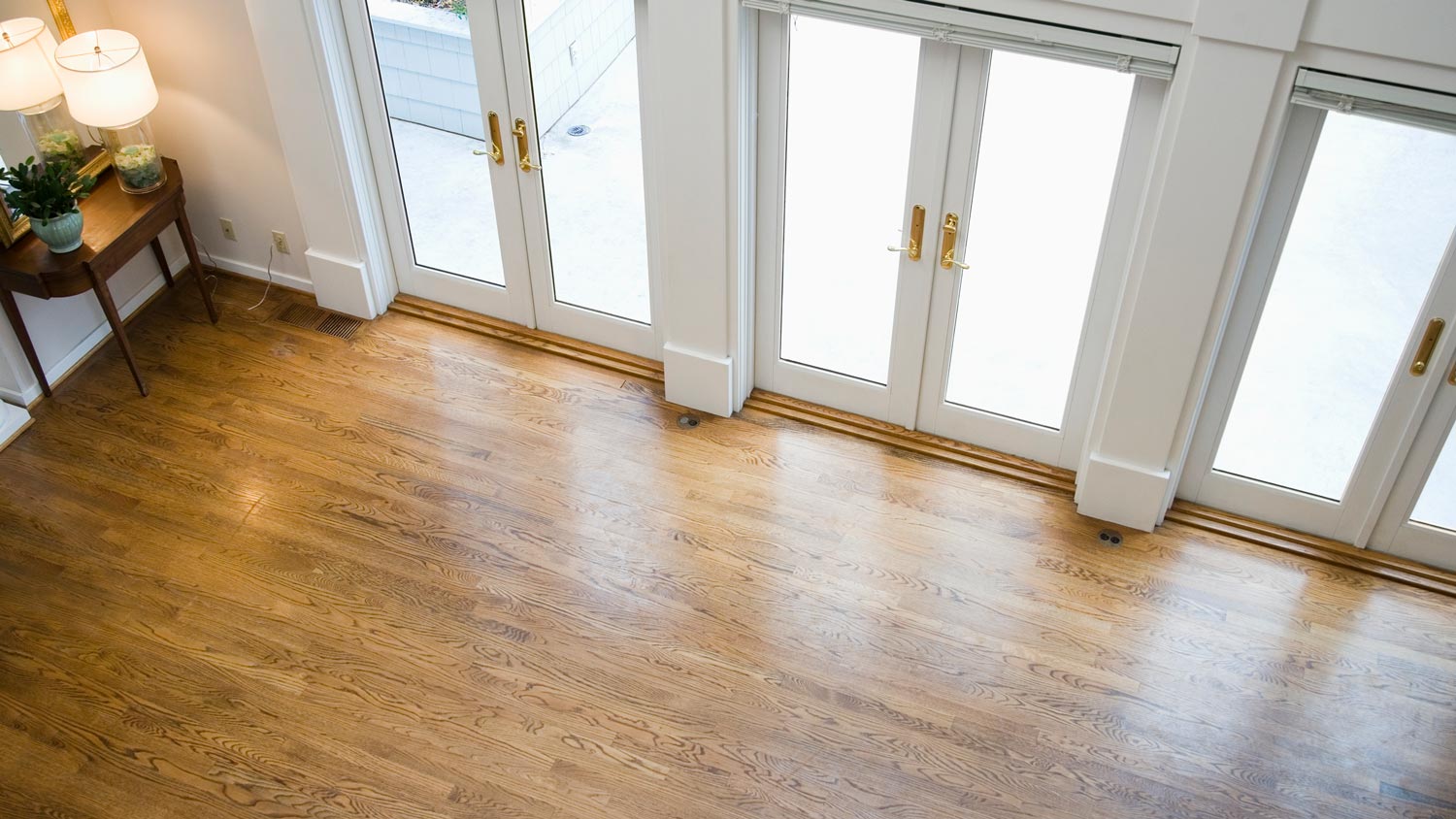
Warm floors, warm feet. Learn how much radiant heated floor costs, types of radiant floor heating systems, and pros and cons.
Ripping out old flooring is a task anyone can tackle


When you’re removing old laminate flooring, there’s a good possibility that it was previously glued down in one big sheet. Depending on how long ago the floor was installed, removing it can either be a huge chore or a straightforward separation from the subfloor.
Here is how to navigate the possibilities and remove laminate flooring.

Every flooring project requires a clean room to start. Before you begin tearing up your floor, vacuum the room thoroughly (making sure to cover the edges really well), then take a mop to the laminate. This will save you time in cleanup down the road and makes the job less of a sticky mess.
If you’re removing a lot of laminate (like an entire kitchen’s worth) you may want to rent a dumpster. Clear a pathway through your home that’s devoid of obstacles so you can carry the large sections of discarded flooring out to the garbage can or dumpster as you remove them.
Cutting flooring sheets isn’t an exact science, so it’s likely that the previous flooring installer laid down baseboard or quarter round molding to hide these minor imperfections. This means that in order to get a foothold on an edge so you can pry up the laminate, you’ll need to remove the baseboard first. If you’re careful enough, you can reuse these pieces of material when you install new flooring so proceed with the precision of a surgeon as you separate the trim from the wall.
Taking the pry bar, gently separate the baseboard from the walls. If you have sheetrock, it’s helpful to utilize a small piece of wood against the wall so that the pry bar doesn’t punch a hole as you apply pressure. Remove all of the baseboard and set it aside, being careful to snip off or hammer out the nails that held it to the wall.
Because you’re destroying the flooring and (probably) throwing it away, slicing it up before you start prying the laminate is a good way to keep your debris manageable and easy to carry. Start at one end, eyeball a width of three feet across and cut deep into the laminate from end to end. Continue doing this until you’ve neatly divided the room into sections.
Starting at any endpoint, use the putty knife to pry up along an edge. Once you’ve got about five inches of flooring eased up along one of your sections, try grabbing the whole piece to rip it up. Roll the flooring into a tube as you go and dispose of it in the trash.
If this doesn’t work, or the flooring is so old that it shatters, you’ll need to do it piece by piece using the hammer, pry bar, and putty knife. In such a situation, you’ll want to keep trying to get a purchase with your tools underneath the laminate and directly against the subfloor to get up as much as possible in large chunks.
If your laminate flooring was glued down (versus a floating floor), you’ll need to remove any glue before the new flooring goes in. Use heavy grit sandpaper (like 50 or 80) on your orbital sander and grind down the old glue. Be sure to wear breathing protection as the silica dust or other small particle exposure generated by sanding glue is bad for your health.
Local recycling companies typically can’t accept laminate flooring, so this means you can dispose of it with your curbside pickup (or take it to a local landfill for larger loads). Another option is hiring a dumpster rental service, so you can load it all at once and have it taken away when you’ve finished your project, or hire a local junk removal service to do all the work for you.
Removing laminate flooring costs $200 to $1,000. The size of the area you’re removing has a major impact on cost, as do labor costs and haul-away fees. Plus, if you live in an area with a higher cost of living, you can expect more expensive rates for the removal.
Removing laminate flooring is a task that even the newbie home renovator can handle with a little bit of research and the ability to muscle-up the materials. However, if you simply don’t have the time or the job is too intimidating, you can hire a local flooring contractor to get rid of the old material for you and reinstall something new.
From average costs to expert advice, get all the answers you need to get your job done.

Warm floors, warm feet. Learn how much radiant heated floor costs, types of radiant floor heating systems, and pros and cons.

Sustainable, durable, and affordable—these are a few of the benefits of bamboo floors. Here’s a breakdown of bamboo flooring costs to consider.

Most people wrap floor removal into a larger project, but the itemized cost to remove laminate flooring depends on the size and state of the floor.

Discover the true granite floor installation cost. Learn about average prices, cost factors, and tips to save on your granite flooring project.

Updated flooring can make any room in your home feel brand new. Explore flooring installation costs in Chicago, IL, from materials to labor costs.

Uneven floor joists don’t just lead to annoyingly sagging floors; they could be a sign of bigger issues. Here’s who to hire to fix flooring joists.